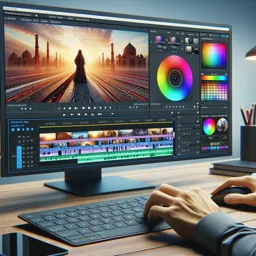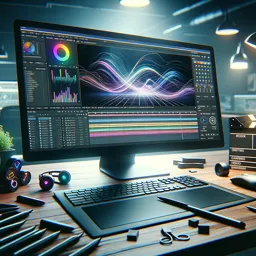Introduction
Adobe Premiere is one of the leading video editing platforms, widely used by filmmakers, content creators, and video enthusiasts worldwide. Its robust toolkit provides a perfect environment for crafting engaging narratives, whether you’re editing a short film, documentary, vlog, or branded video. In this article, we’ll explore how to harness Adobe Premiere’s editing tools to tell compelling visual stories and elevate the impact of your narratives.
Organizing Your Project for Narrative Flow
A well-organized project sets the foundation for powerful storytelling. Start by importing your footage into Adobe Premiere and using the Project Panel to sort your clips into bins based on scenes, acts, or locations. Use color labels and metadata to make important moments easy to find during editing. Creating a storyboard or a rough assembly in the timeline gives you a roadmap to follow as you refine your story.
Utilizing Timeline Editing Techniques
The timeline is where your story comes to life. Use Adobe Premiere’s Trim Tool for precise adjustments, ensuring your cuts serve the pacing and emotion of each scene. Experiment with L-Cuts and J-Cuts to create seamless audio and visual transitions, helping dialogue and action flow naturally. The Ripple Edit and Rolling Edit tools make it easy to fine-tune reshuffling of scenes, enhancing narrative coherence.
Transitions and Visual Storytelling
Transitions guide viewers through your story and signal changes in time, location, or mood. Adobe Premiere offers classic transitions like cross dissolves, wipes, and fades to black. Use these sparingly and purposefully to avoid disrupting your narrative flow. Layering video tracks and experimenting with opacity can add creative transitions, such as dream sequences or flashbacks, enriching your visual storytelling.
Sound as a Storytelling Tool
Audio is crucial in narrative video. With Adobe Premiere’s Essential Sound panel, you can balance dialogue, music, and effects to support your story’s emotional beats. Adding subtle ambient sounds or foley can transport your audience into the world you’re creating. Don’t forget to use dramatic silence or quiet moments—sometimes, what you don’t hear can be just as powerful.
Conclusion
Adobe Premiere provides filmmakers and storytellers a comprehensive palette to shape captivating narratives. By mastering project organization, timeline techniques, transitions, and sound design, you can transform raw footage into engaging visual stories that resonate with your audience. Keep experimenting and refining your edits—the best storytellers are always learning!
































